#françois junod
Text
Automata are ancient animated sculptures, ‘magic’ objects that use complex mechanics to move artfully. One artist in Switzerland has dedicated his life to bringing back this ancient art.
18 notes
·
View notes
Text

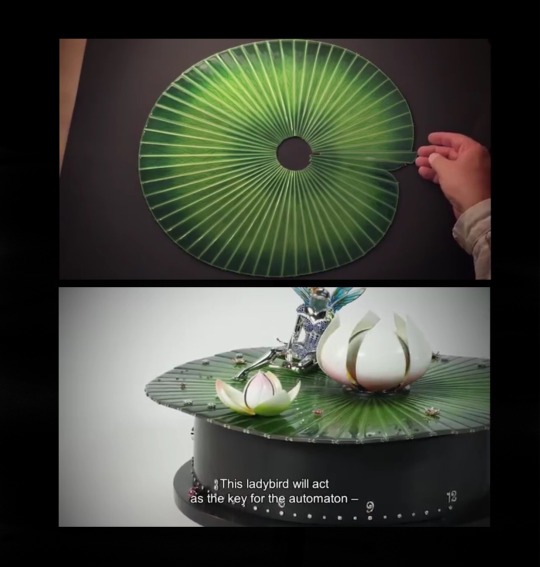
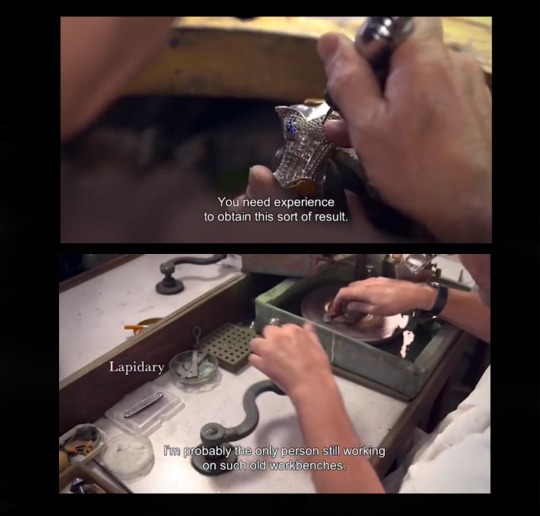
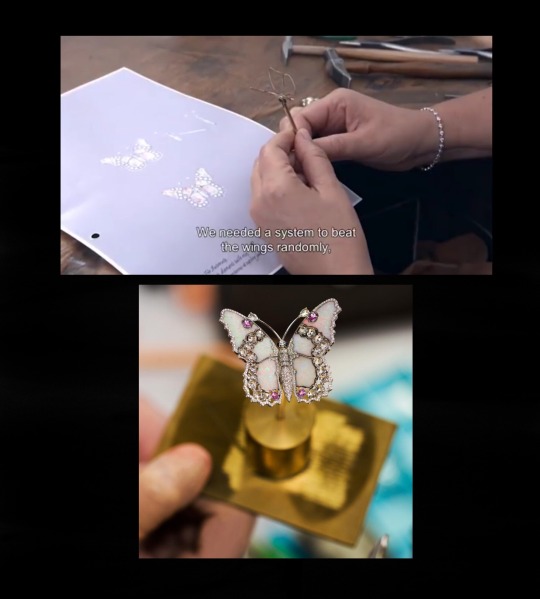

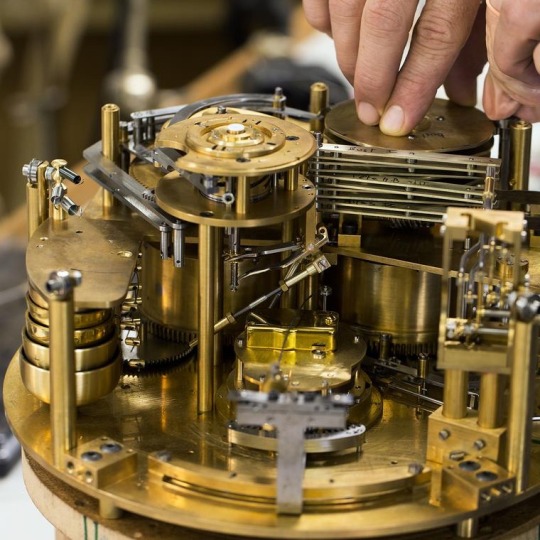
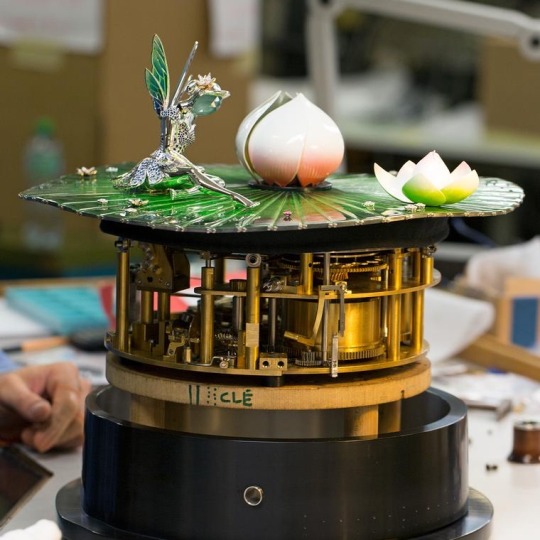
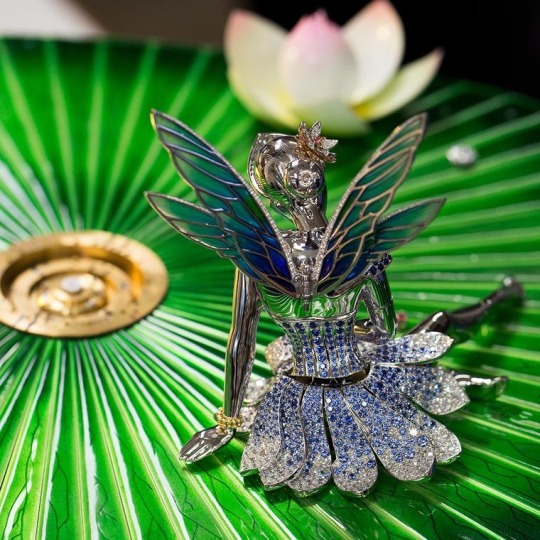
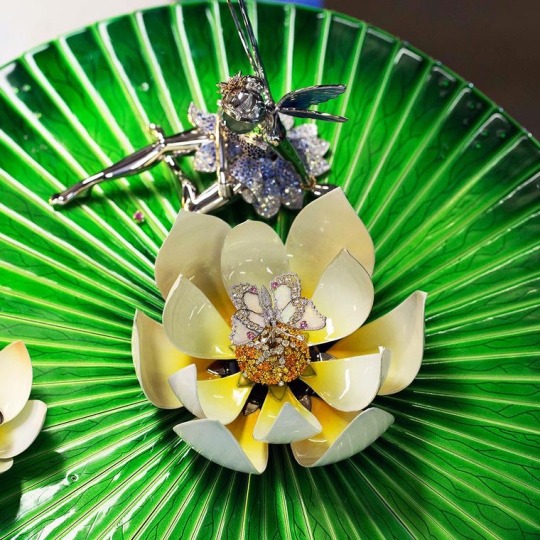
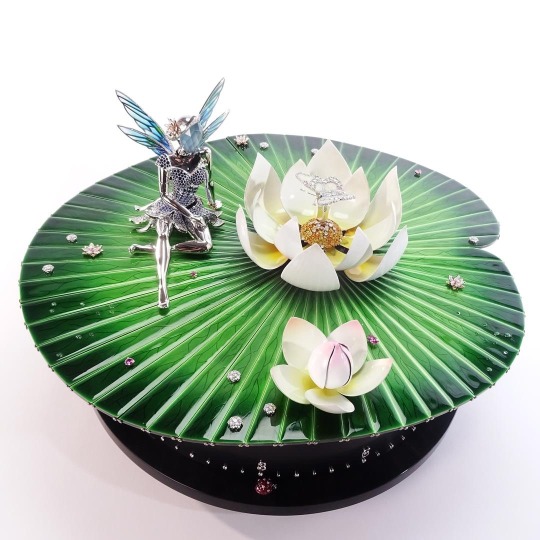
Van Cleef & Arpels Automate Fée Ondine https://youtu.be/I-O5HHflcC4
youtube
https://youtu.be/7B9RltuQiJg
youtube
https://www.nytimes.com/2017/01/17/fashion/clock-van-cleef-arpels.html
From Van Cleef & Arpels, a Fairy Tableau
By Ming Liu
Jan. 17, 2017
For the past decade Van Cleef & Arpels has been honing its Poetic Complications range, a narrative-based watchmaking collection designed for women.
As Nicolas Bos, the Parisian company’s president and chief executive, explained: “As a jewelry house, we have been telling stories that we feel resonate with feminine tastes. We have colleagues that create fantastic men’s watches — highly technical, very masculine sports pieces — but that is not our world. What we try to do is transfer our identity into the world of watchmaking.”
And making its debut at the Salon International de la Haute Horlogerie this week is the Fée Ondine automaton, a bejeweled timepiece that is 12 inches high and 15 inches wide. It was about eight years in the making, involving the skills of both in-house artisans and stonecutters, enamel specialists and cabinet makers from about 15 independent workshops.
Their work presents the story of the Fée Ondine, a fairy: A leaf’s movement wakes a sleeping fairy, who watches a water lily bloom and a butterfly dance before she returns to sleep. The sequence is only 45 seconds long but it displays the multiple complex movements of the four elements: The leaf’s trembling, the fairy’s twitching wings and arching neck, the lily’s opening, the butterfly’s rising and, finally, the fairy’s falling back asleep — all heralded by clear, nursery-rhyme-like chimes. “Altogether it’s one single mechanism where everything is intricately linked,” Mr. Bos said.
The design process pushed the house’s creativity, he recalled. “It was different to a piece of jewelry or even a watch. We looked at it like a movie script or story board,” he said. “The thinking was, if we can go from still life to animation, as you would from photograph to a short movie, then there is definitely something to develop that does not really exist in this industry.”
The mechanisms were produced in collaboration with François Junod, an automaton specialist in Sainte-Croix, Switzerland, the birthplace of the music box industry. (“It’s a very tiny village in the middle of the mountains,” Mr. Bos said. “It’s true Switzerland.”)
The automaton showcases the house’s savoir faire. The fairy’s translucent blue wings are the result of plique-à-jour enameling. Her face, much larger than those of the ballerinas in the house’s signature brooches, was a particular challenge. The fairy is the size of a doll, but “you don’t want it to look like a doll,” Mr. Bos said. “The question was how to keep the preciousness.” In the end, an expert lapidarist faceted an aquamarine by eye to suggest a feminine expression.
The whole scene rests on an ebony veneer base with a retrograde-hour movement that has an eight-day power reserve. The hour is indicated by a ruby ladybug crafted in the house’s signature Mystery Setting.
There is one more mystery: Will the Fée Ondine be offered for sale? “It’s been such a long journey,” Mr. Bos said. “My first wish is to see if it triggers interest and emotion. Then we’ll decide.”
Article & image source http://www.thejewelleryeditor.com/watches/article/time-for-fairy-tale-van-cleef-arpels-fee-ondine-automaton/
16 February 2017 by REBECCA DOULTON
Van Cleef & Arpels Automate Fée Ondine
Although the SIHH 2017 was, on the whole, quieter than past editions with restrained offerings and price containment as the prevailing trends, there were some wonderful timepieces on show whose sole mission was to delight and entertain.
The undisputed star of this category was the Van Cleef & Arpels Fée Ondine, a show-stopping high jewellery automaton that had visitors hypnotised. No matter how accustomed we might be to all the electronic wizardry available today, it is refreshing to be enthralled again by the sheer magic of mechanical animation.
From the house of fairies, flowers and butterflies comes this spellbinding bejewelled automaton. The first “Extraordinary Object” from Van Cleef & Arpels, the Automate Fée Ondine comes alive on command as the fairy, sitting on a lily pad, awakens to a chiming melody to admire a fluttering butterfly emerging from the centre of a flower. The spectacle lasts 50 seconds before the butterfly retreats back inside the flower and the fairy returns to her original position.
When activated the scenery of the Van Cleef & Arpels Fée Ondine comes to life: the water lily flower blooms, the fairy awakens and a butterfly rises into the air.
Crafted in white gold, the miniature mechanism that brings the fairy’s limbs to life is hidden from sight. Dressed like a ballerina with a bodice and tutu set with graduated blue sapphires, the fairy’s flapping wings are crafted in translucent plique-à jour-enamel, while her face is represented by a hand-faceted aquamarine stone.
The tutu and bodice of the gold Van Cleef & Arpels Fée Ondine fairy are set with sapphires and diamonds while her wings are crafted in translucent plique á jour enamel.
Van Cleef & Arpels’ famous Papillon brooches were the inspiration behind the high jewellery white gold butterfly. The mechanism allowing the butterfly to take flight is artfully concealed in its body and the wings are exquisitely set with rose-cut diamonds framing the Australian white opal centre, dotted with four pink sapphires.
The white gold butterfly fluttering its wings on the Van Cleef & Arpels Fée Ondine automaton is embellished with white opal, diamonds and pink sapphires.
The part of the animation that enthralled me the most was when the giant green enamel lily pad began to ripple. Composed of 60 blades that have been arranged like a fan, the movement is gently transmitted from blade to blade, creating a smooth rolling motion.
The giant green enamel lily pad ripples with a smooth rolling motion thanks to the 60 blades that are arranged like a fan on the Van Cleef & Arpels Fée Ondine automaton.
A unique work of art, the Fée Ondine is the collaborative effort of many workshops and unites the experience of François Junod, a famous maker of automata, along with the work of stone cutters, stone setters, enamel artists, watchmakers are even cabinet makers.
A unique work of art, the complex mechanism animating the Van Cleef & Arpels Fée Ondine was developed by automata expert François Junod.
In addition to the marvellous spectacle taking place on the lily pad, the Fée Ondine is also a clock and features a retrograde hour display located at the base of the structure. Time is indicated by a delightful ladybird covered with invisibly-set rubies that pops back to the starting point once it has reached 12 o’clock.
The Van Cleef & Arpels Automate Fée Ondine, a show-stopping mechanical high jewellery automaton, drew crowds at the SIHH 2017.
When activated the scenery of the Van Cleef & Arpels Fée Ondine comes to life: the water lily flower blooms, the fairy awakens and a butterfly rises into the air.
The tutu and bodice of the gold Van Cleef & Arpels Fée Ondine fairy are set with sapphires and diamonds while her wings are crafted in translucent plique á jour enamel.
The giant green enamel lily pad ripples with a smooth rolling motion thanks to the 60 blades that are arranged like a fan on the Van Cleef & Arpels Fée Ondine automaton.
The white gold butterfly fluttering its wings on the Van Cleef & Arpels Fée Ondine automaton is embellished with white opal, diamonds and pink sapphires.
A unique work of art, the complex mechanism animating the Van Cleef & Arpels Fée Ondine was developed by automata expert François Junod.
The time on the Van Cleef & Arpels Fée Ondine is indicated by a ladybird invisibly-set rubies, that pops back to the starting point once it has reac
#automaton#van cleef & arpels#jewellery#fairy#fée ondine#nature#mechanical#silver#enamel#gems#lapidary#lily pad#waterlily#ladybird#françois junod#time#clocks#diamonds#opal
3 notes
·
View notes
Text
Contemporary automata
As Merriam-Webster put it:
The idea of the automaton has fascinated people for many centuries. A traveler to the emperor's court in Byzantium in A.D. 949 reported that mechanical birds sat in a golden tree singing the songs of their species; that mechanical lions flanked the throne, roaring and switching their great tails; and that, as he stood watching, the emperor's throne suddenly shot upward toward the high ceiling, and when it slowly descended the emperor was wearing new robes. Early automata (notice the common plural form) often relied on water, steam, or falling weights to power them. Today automata, often called robots, are used in manufacturing plants to build not only vehicles but also much smaller electronic equipment.
The last sentence is the thing that puts me off. Robots used in manufacturing have a completely different idea behind them. Automatons are a unity of science and art. They are not to be compared with operating machines which were designed to make labor easier for workers.
Since the "Golden Age" and till today automatons have been developing. I believe they've evolved into two types:
1. Human like androids (humanoids)
2. Contemporary automata
The difference between these two is - the creators of androids (1) pursue the scientific side of their creations. They use modern technology and artificial intelligence software to create smarter automata. That’s what the Jacquet-Droz family were going for (their automatons are considered to be the first forms of computers). Nowadays android makers build in cameras in the eyes of robots that allow humanoids to see faces, process emotional data and understand speech. A good example of this is Sophia, a creation of Hanson Robotics. This company have invented a social android that is meant to form relationships with people, and, as Dr. David Hanson said in a CNBC interview, he thinks that robots will be able to help humans in near future and become our true friends.
(Hot Robot At SXSW Says She Wants To Destroy Humans | The Pulse | CNBC - that clickbait title tho)
So if you wanna know how 18th century aristocrats felt when they saw "La Joueuese" for the first time, you can kind of get an idea watching this clip of the tonight show with Jimmy Fallon (Sophia's in it).
I think most people are amazed by her intelligence and expressive face. It's just entertaining to see a new and fun scientific creation. Science is wrapped in a "hot" girl's shape. You can notice that automatons have become smarter, and more lifelike, but still not 100% human like. Dr. David Hanson has an explanation for that: "I do believe there will be a time where robots are indistinguishable from humans. My preference is to make them always look a little bit like robots so you know".
The second category of contemporary automata continues the tradition of 18th and 19th centuries with an emphasis on art, rather than technological sophistication. Such are the works of Christian Bailly, François Junod. The inventors that like to create old-fashioned automata are preserving the art of the "Golden Age". They are using new materials but the technology doesn't really change.
There's something which i will refer to as "robotic art", that is not included in this category. I basically mean art inspired by automata and robotics. Ex: cloaca by Wim Delvoye, kinetic sculptures of Arthur Ganson, and, some works of (again) François Junod.
#art#automata#automaton#jimmy fallon#robot#humanoid#hanson robotics#christian bailly#merriam-webster#tonight showbotics#françois junod#kinetic art
3 notes
·
View notes
Photo

#Won't You Be My Neighbor?#movie poster#documentary#Fred Rogers#Mr. Rogers#Mister Rogers' Neighborhood#Morgan Neville#François Scarborough Clemmons#Tom Junod#Yo-Yo Ma#I think this is one of the most important documentaries than can be made in this day and age#That bears witness to a genuine labor of love#Fred Rogers' philosophy about how everything in life derives from love (or lack of it) nails it#So deeply moving I can't find the right words#I just hope that same as Another Day of Life the spirit of it stays with me for the rest of my days
16 notes
·
View notes
Photo

TODAY! Save 10% on everything with code: GETMORE LAST COPY! Mapping Graphic Design History in Switzerland Available at www.draw-down.com This volume presents eleven original essays on the production, mediation and consumption of graphic design artifacts and processes, as well as their respective discourses, by authors from the German, French and Italian-speaking areas of Switzerland. Mapping Graphic Design History in Switzerland discusses theoretical and methodological approaches for historical research on graphic design; helps to establish graphic design history as an academic field in Switzerland; and aims to make this discourse accessible to researchers and professional graphic designers in Switzerland and abroad. The texts are illustrated with around 100 color and largely unpublished images. In addition to the academic texts, the publications contains three visual essays on the history of graphic design in Switzerland, as well as an extensive list of literature and other references. Includes an epilogue and prologue by the editors and contributions by Constance Delamadeleine, Davide Fornari, Roland Früh, Invar-Torre Hollaus, Barbara Junod, Leslie Kennedy, Robert Lzicar, Corina Neuenschwander, Franziska Nyffenegger, François Rappo, Michael Renner, Bettina Richter, Teal Triggs, Amanda Unger, Peter Vetter. With visual essays designed by Diana Iennaco, Marina Prado and Leonardo Signori. Designed by STVG — Jonas Mahrer, Robert Lzicar. 328 pages, softcover, ca. 100 images and 3 visual essays, 6.5 × 9.5 inches #graphicdesign #typography #Switzerland #GraphicDesignHistory https://www.instagram.com/p/By-JEELH2xd/?igshid=2b7mam0c1kuh
8 notes
·
View notes
Photo

The @michelangelofoundation celebrating François Junod, master in #automatonmaking and winner of the 2019 Prix Métiers d'art Suisse. . Born in Sainte-Croix, a small #Swiss town with a rich history of #watchmaking, automata and musical boxes, François strives to recapture the uniqueness and subtlety of #17thcentury automata. His inspiring mechanical sculptures were showcased on film at #HomoFaber2018 in Venice. #Metiersdart #artisan #craftsman #swiss #suisse https://www.instagram.com/p/BwE1A2MlFI3/?utm_source=ig_tumblr_share&igshid=1flcwwhpzy7v
1 note
·
View note
Photo

The Rêveries de Berylline automaton is the first in a series of pieces inspired by nature, a cherished theme for the Maison ever since its foundation. Some 30 centimeters high, these automata – produced in partnership with the François Junod workshop – present a flower that blooms to reveal a fine winged creature. Here, a flower born in an imaginary garden animates on demand, opening its petals to unveil a hummingbird ready to take flight. The movement of the bird called for long hours of research and tests: its wings spread realistically to beat for a few instants, at a natural rhythm. The hummingbird then goes back to its place at the center of the corolla, which simultaneously closes all its petals around the bird, gently enveloping it. The music that accompanies this scene has been specially written for this collection. An Acanthus leaf in mirror-polished gold and diamonds adds the finishing touch to the creation, linking the flower to the base of the piece, where a rotating ring enables the time to be read. https://www.instagram.com/p/Cb2QKMvLRDJ/?utm_medium=tumblr
0 notes
Photo

Il Giocatore Veneziano, a obra-prima de Daniel Roth apresentada em 2009, produzida em parceria com François Junod, um mestre na criação de autômatos. O movimento combina uma repetição de minutos com um autômato que joga dados, inspirado em uma obra de Caravaggio. A caixa de 46 x 43 mm em ouro branco abriga o movimento calibre DR 7300. 📷 #danielroth • • #ilgiocatoreveneziano #automaton #minuterepeater #masterpiece #sonnerie #finewatchmaking #hautehorlogerie #relogioserelogios https://www.instagram.com/p/BnfLIzVFrpq/?utm_source=ig_tumblr_share&igshid=1jvfw31kc0kat
#danielroth#ilgiocatoreveneziano#automaton#minuterepeater#masterpiece#sonnerie#finewatchmaking#hautehorlogerie#relogioserelogios
4 notes
·
View notes
Text

Visite à mon ami automatier François Junod, ✨le magicien de Sainte-Croix🇨🇭. Ne cessez jamais, tels d’éternels enfants curieux de tout, de vous interroger 🤩
0 notes
Photo




Van Cleef & Arpels unveil its first Extraordinary Object: the Automate Fée Ondine
The fruit of long years’ work and an intense collaboration with automaton maker François Junod.
youtube
via Luxury-Design
#Steampunk Tendencies#Steampunk#Steam punk#Steampunk Art#Illustration#Steampunk Illustration#Fantasy#Fantasy art#Scifi#automate#automaton#jewelry#mechanical#clockpunk#Van Cleef & Arpels#art
12K notes
·
View notes
Video
vimeo
The Magic of Making Machines
The Magic of Making Machines. In a country known for their intricate watchmaking, one man is taking the mastery of machinery to another level—and to another era. Meet François Junod, a craftsman bringing back the ancient art of automata. Building automata dates back to ancient Egypt and is thought to be one of the earliest forays into robotics. First developed as a form of entertainment for royalty, automata are complex mechanical sculptures that combine watchmaking and anatomy to create objects that seemingly come alive. Today, Junod is assembling mechanical masterpieces out of his studio in Switzerland, taking the historical craft into the future.
0 notes
Text
Swiss Artist Creates Amazing Automatons That Come Alive With Ingenious Traditional Engineering
Swiss Artist Creates Amazing Automatons That Come Alive With Ingenious Traditional Engineering
Swiss artist François Junod sat down with Great Big Story in his Sainte-Croix atelier to talk about the amazing and beautiful automatons he creates using traditional techniques that go all the way back to ancient Egypt. Junod explained that the art of automata marries his creative and engineering interests together and that the real difference between an automaton and a robot is the aesthetic…
View On WordPress
0 notes
Video
youtube
On the occasion of the SIHH 2017, Van Cleef & Arpels is delighted to unveil its first Extraordinary Object: the Automate Fée Ondine. The fruit of long years’ work and an intense collaboration with automaton maker François Junod, the project also owes its existence to the savoir-faire of the numerous craftsmen who have taken part in its creation.
Bringing together the jewelry and watchmaking traditions, this unique piece marks a new chapter for the Maison, in keeping with precious objects such as carriage and table clocks.
The highly complex mechanism – which animates various elements and also tells the time – gives pride of place to an ephemeral poetry: movement and lightness, the beauty of nature, the grace of a fairy waking from sleep and the nuances of precious stones and enamel. This bejeweled tableau comes to life with infinite delicacy.
The Maison’s imagination, creativity and attachment to ancestral crafts have come together in this Extraordinary Object to instill a dreamlike sense of wonder. (x)
#van cleef & arpels#jewelry#faeries#automaton#Automate Fée Ondine#video#stunning#i'm completely speechless#poetry inspiration
0 notes
Photo

Last Copies! Mapping Graphic Design History in Switzerland / Available at draw-down.myshopify.com / This volume presents eleven original essays on the production, mediation and consumption of graphic design artifacts and processes, as well as their respective discourses, by authors from the German, French and Italian-speaking areas of Switzerland. Mapping Graphic Design History in Switzerland discusses theoretical and methodological approaches for historical research on graphic design; helps to establish graphic design history as an academic field in Switzerland; and aims to make this discourse accessible to researchers and professional graphic designers in Switzerland and abroad. The texts are illustrated with around 100 color and largely unpublished images. In addition to the academic texts, the publications contains three visual essays on the history of graphic design in Switzerland, as well as an extensive list of literature and other references. Includes an epilogue and prologue by the editors and contributions by Constance Delamadeleine, Davide Fornari, Roland Früh, Invar-Torre Hollaus, Barbara Junod, Leslie Kennedy, Robert Lzicar, Corina Neuenschwander, Franziska Nyffenegger, François Rappo, Michael Renner, Bettina Richter, Teal Triggs, Amanda Unger, Peter Vetter. With visual essays designed by Diana Iennaco, Marina Prado and Leonardo Signori. Designed by STVG — Jonas Mahrer, Robert Lzicar. 328 pages, softcover, ca. 100 images and 3 visual essays, 6.5 × 9.5 inches #graphicdesign #typography #Switzerland #GraphicDesignHistory
8 notes
·
View notes
Photo

TODAY ONLY! Save 11% on EVERYTHING. Enter code “ONZE” at checkout! Mapping Graphic Design History in Switzerland / Available at draw-down.myshopify.com / This volume presents eleven original essays on the production, mediation and consumption of graphic design artifacts and processes, as well as their respective discourses, by authors from the German, French and Italian-speaking areas of Switzerland. Mapping Graphic Design History in Switzerland discusses theoretical and methodological approaches for historical research on graphic design; helps to establish graphic design history as an academic field in Switzerland; and aims to make this discourse accessible to researchers and professional graphic designers in Switzerland and abroad. The texts are illustrated with around 100 color and largely unpublished images. In addition to the academic texts, the publications contains three visual essays on the history of graphic design in Switzerland, as well as an extensive list of literature and other references. Includes an epilogue and prologue by the editors and contributions by Constance Delamadeleine, Davide Fornari, Roland Früh, Invar-Torre Hollaus, Barbara Junod, Leslie Kennedy, Robert Lzicar, Corina Neuenschwander, Franziska Nyffenegger, François Rappo, Michael Renner, Bettina Richter, Teal Triggs, Amanda Unger, Peter Vetter. With visual essays designed by Diana Iennaco, Marina Prado and Leonardo Signori. Designed by STVG — Jonas Mahrer, Robert Lzicar. 328 pages, softcover, ca. 100 images and 3 visual essays, 6.5 × 9.5 inches #graphicdesign #typography #Switzerland #GraphicDesignHistory
3 notes
·
View notes
